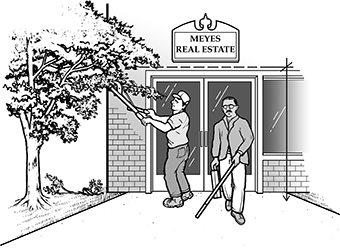






Common barriers
Many older buildings have architectural features that are barriers for people who have disabilities. Some are obvious impediments such as curbs, steps, narrow doors, narrow aisles, and narrow check-out lanes. But there are many other, less obvious barriers.
A common misconception about the ADA is that older buildings are not covered, they are "grandfathered." This is not true. Businesses that serve the public must remove barriers in existing facilities based on the following considerations.
.jpg) |
.jpg) |
|
Restaurant with step at entrance is not accessible to customers who use wheelchairs or scooters. |
Restaurant after a ramp is installed, making the entrance accessible. |
Removing barriers
Removing or correcting barriers can be simple and inexpensive in one facility, but difficult and costly in another. For this reason, the ADA sets out a flexible rule for removing barriers. Businesses must remove physical barriers in existing facilities to improve accessibility where it is "readily achievable" to do so. Barrier removal is considered "readily achievable" when it can be easily accomplished, without much difficulty or expense.

A man who is blind is leaving a real estate agency. A workman
is trimming a tree branch that hangs too low over the sidewalk.
|
|
|
|
|
|




